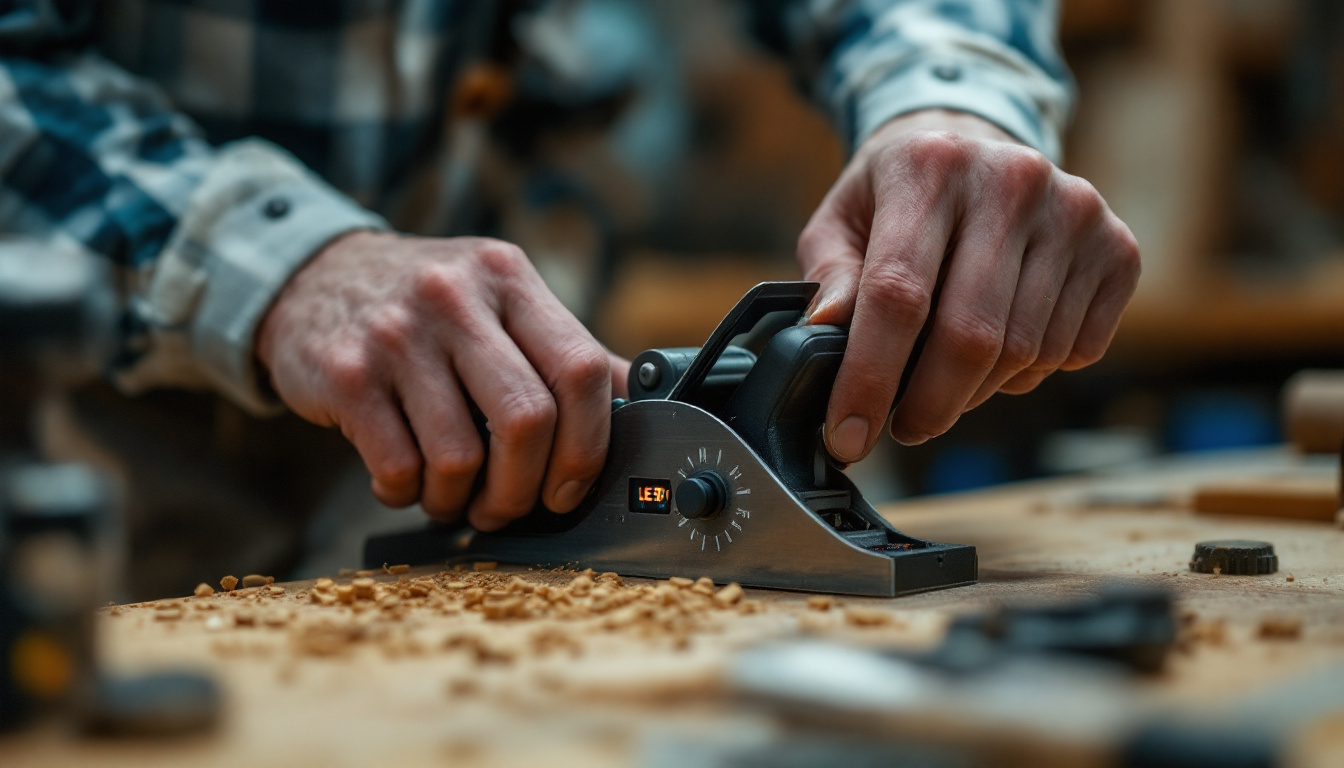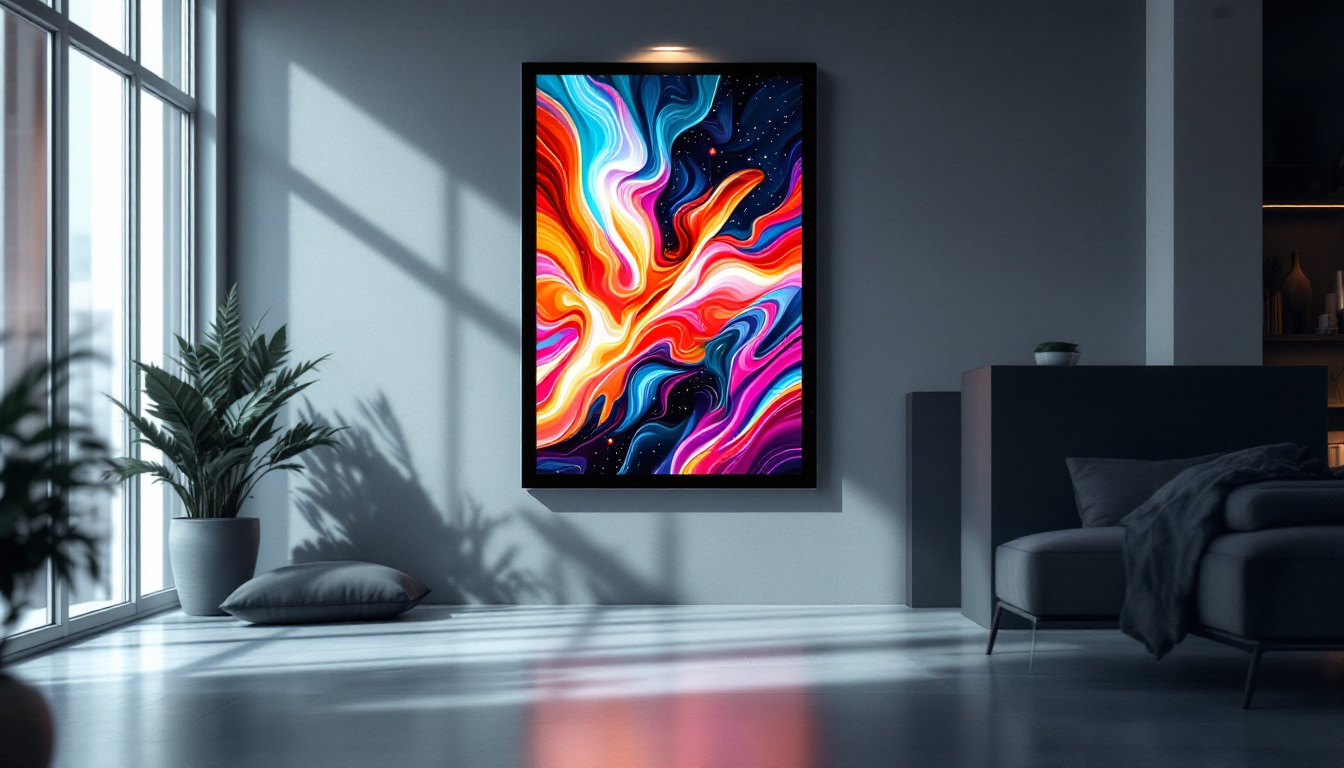A hand planer is an essential tool for woodworkers, providing a smooth and even finish to wood surfaces. With the advancement of technology, many modern hand planers now come equipped with LED displays that make adjustments easier and more precise. Understanding how to adjust a hand planer with an LED display can enhance your woodworking experience significantly. This article will guide you through the process, ensuring you can achieve the best results with your hand planer.
Understanding the Basics of a Hand Planer
Before diving into adjustments, it is crucial to understand the basic components of a hand planer. A hand planer typically consists of a cutting blade, a base plate, and an adjustment mechanism. The cutting blade is responsible for removing material from the wood, while the base plate ensures stability during operation. The adjustment mechanism allows users to set the depth of cut, which is vital for achieving a smooth finish. Furthermore, the design of the hand planer can vary significantly, with some models featuring ergonomic handles that provide better grip and control, making it easier for users to maneuver the tool with precision.
In addition to the primary components, understanding the different types of blades available for hand planers can enhance your woodworking experience. Blades come in various materials and configurations, each suited for specific tasks. For instance, high-speed steel (HSS) blades are known for their durability and ability to maintain sharpness, while carbide blades offer longer life and superior cutting performance. Choosing the right blade not only affects the quality of the finish but also the efficiency of the planing process, allowing woodworkers to tailor their tools to their specific needs.
The Role of the LED Display
The LED display on a hand planer serves as a user-friendly interface that provides real-time information about the tool’s settings. It typically shows the depth of cut, battery life, and sometimes even the speed of the blade. This information is crucial for making precise adjustments and ensuring optimal performance. Additionally, some advanced models may feature a digital readout that can be calibrated for different materials, allowing users to switch between softwoods and hardwoods with ease, ensuring that they achieve the best results regardless of the type of wood they are working with.
Benefits of Using an LED Display
Using a hand planer with an LED display offers several advantages. First, it allows for quick and easy adjustments without the need for guesswork. Users can see exact measurements, reducing the risk of over- or under-planing. Additionally, the LED display often includes indicators for maintenance, helping users keep their tools in top condition. This proactive approach to tool care can extend the lifespan of the planer and ensure consistent performance over time. Moreover, the clarity of the LED display can be particularly beneficial in low-light conditions, allowing woodworkers to work efficiently without compromising accuracy.
Another significant benefit of an LED display is its ability to enhance user confidence, especially for beginners. With clear visual feedback, novice woodworkers can learn to make adjustments with precision, fostering a better understanding of how different settings affect the final product. This educational aspect can lead to improved skills and a greater appreciation for the craft, as users become more adept at manipulating their tools to achieve desired outcomes. As a result, the integration of technology in traditional woodworking tools like hand planers not only simplifies the process but also enriches the overall experience of woodworking.
Adjusting the Depth of Cut
One of the primary adjustments made on a hand planer is the depth of cut. This setting determines how much material is removed from the wood with each pass. Making precise adjustments is essential for achieving the desired finish and ensuring the wood does not become too thin or damaged. A well-calibrated depth of cut not only enhances the quality of the finished surface but also prolongs the life of the tool by reducing unnecessary strain on the blades.
Locating the Adjustment Dial
The adjustment dial is usually located on the side of the hand planer. It may be labeled with measurements, allowing users to easily set their desired depth of cut. Familiarizing yourself with the location and function of this dial is the first step in making effective adjustments. Some models feature a quick-release mechanism that allows for rapid changes, which can be particularly useful when switching between different wood types or adjusting for varying grain patterns. Understanding how to operate this feature can significantly streamline your workflow.
Using the LED Display for Depth Settings
Once the adjustment dial is located, the next step is to use the LED display to set the depth of cut. Turn the dial slowly, watching the LED display as it updates the depth measurement. Many models will show both metric and imperial units, so choose the one that best suits your project. Aim for a depth that balances efficiency and finish quality; typically, a depth of 1/16 inch is a good starting point for most applications. Additionally, consider the type of wood you are working with; softer woods may allow for a deeper cut without compromising the integrity of the material, while harder woods might require a more conservative approach to avoid chipping or splintering. Experimenting with different depths on scrap pieces can provide valuable insight into how your chosen wood reacts to various settings.
Fine-Tuning the Planing Process
After setting the initial depth of cut, fine-tuning the planing process is essential for achieving a smooth surface. This involves making minor adjustments based on the type of wood being worked on and the desired finish.
Testing the Depth
Before committing to a full pass on your wood, it is advisable to test the depth of cut on a scrap piece of wood. This test will provide insight into how the planer interacts with the material and whether further adjustments are necessary. If the cut is too deep, simply return to the adjustment dial and lower the setting slightly.
Observing the LED Feedback
As the planer is used, the LED display may provide feedback on the performance of the tool. For instance, if the display indicates that the battery is low or that the blade is dull, these are signs that adjustments or maintenance are needed. Regularly monitoring the LED display can prevent issues before they affect the quality of your work.
Maintaining Your Hand Planer
Proper maintenance is crucial for ensuring the longevity and performance of a hand planer. Regular checks and adjustments can prevent wear and tear, allowing the tool to function optimally over time.
Cleaning the Blade and Base Plate
After each use, it is essential to clean the blade and base plate of the hand planer. Wood shavings and dust can accumulate, affecting performance. Use a soft cloth to wipe down the surfaces and ensure that no debris is obstructing the blade’s movement. Keeping these components clean will enhance the quality of the cuts and prolong the life of the tool.
Checking Blade Sharpness
A dull blade can lead to poor results, making it necessary to check the sharpness regularly. If the LED display indicates a decrease in performance or if the cuts become rough, it may be time to sharpen or replace the blade. Many hand planers come with instructions for blade maintenance, so refer to the manual for specific guidance.
Common Issues and Troubleshooting
Even with proper adjustments and maintenance, users may encounter common issues while using a hand planer. Understanding these problems and how to troubleshoot them can save time and frustration.
Uneven Cuts
One of the most common issues is uneven cuts. This can occur for several reasons, including an incorrect depth setting or a dull blade. If the LED display shows a depth that seems inconsistent with the cut being made, double-check the adjustment dial. Additionally, ensure that the blade is sharp and properly aligned.
Excessive Vibration
Excessive vibration during operation can be a sign of a misaligned blade or an unstable work surface. Check the blade alignment using the manufacturer’s guidelines. If the vibration persists, consider the stability of the surface on which you are working. A solid, level surface is vital for effective planing.
Advanced Features of LED Displays
Modern hand planers with LED displays often come equipped with advanced features that enhance usability and performance. Understanding these features can further improve the planning process.
Battery Life Indicator
Many LED displays include a battery life indicator, which is essential for cordless models. This feature allows users to monitor battery levels in real-time, ensuring that the tool does not run out of power mid-project. Keeping an eye on this indicator can help plan work sessions more effectively.
Speed Settings
Some hand planers offer adjustable speed settings, which can be displayed on the LED screen. Different woods may require different speeds for optimal results. For example, harder woods may benefit from slower speeds, while softer woods can be planed more quickly. Adjusting the speed according to the material can lead to a better finish.
Conclusion
Adjusting a hand planer with an LED display is a straightforward process that can significantly enhance woodworking projects. By understanding the components of the tool, utilizing the LED display for precise adjustments, and maintaining the planer properly, users can achieve excellent results. Whether you are a seasoned woodworker or a beginner, mastering the use of a hand planer will elevate your craftsmanship and ensure beautiful finishes on every project.
Investing time in learning how to adjust and maintain your hand planer will pay off in the quality of your work. With the right adjustments and care, this tool can become an invaluable asset in any woodworking shop.
Enhance Your Woodworking with LumenMatrix LED Displays
Ready to take your woodworking projects to the next level? Discover the unparalleled clarity and precision of LumenMatrix LED Display Solutions. As a pioneer in LED display technology, LumenMatrix offers a wide array of innovative products that can transform your workspace and presentation. From Indoor and Outdoor LED Wall Displays to specialized solutions like Vehicle and Sports Displays, LumenMatrix has the tools to illuminate your craftsmanship. Elevate your woodworking artistry today by exploring the vivid and versatile LED displays from LumenMatrix – where every project is showcased in its best light.































